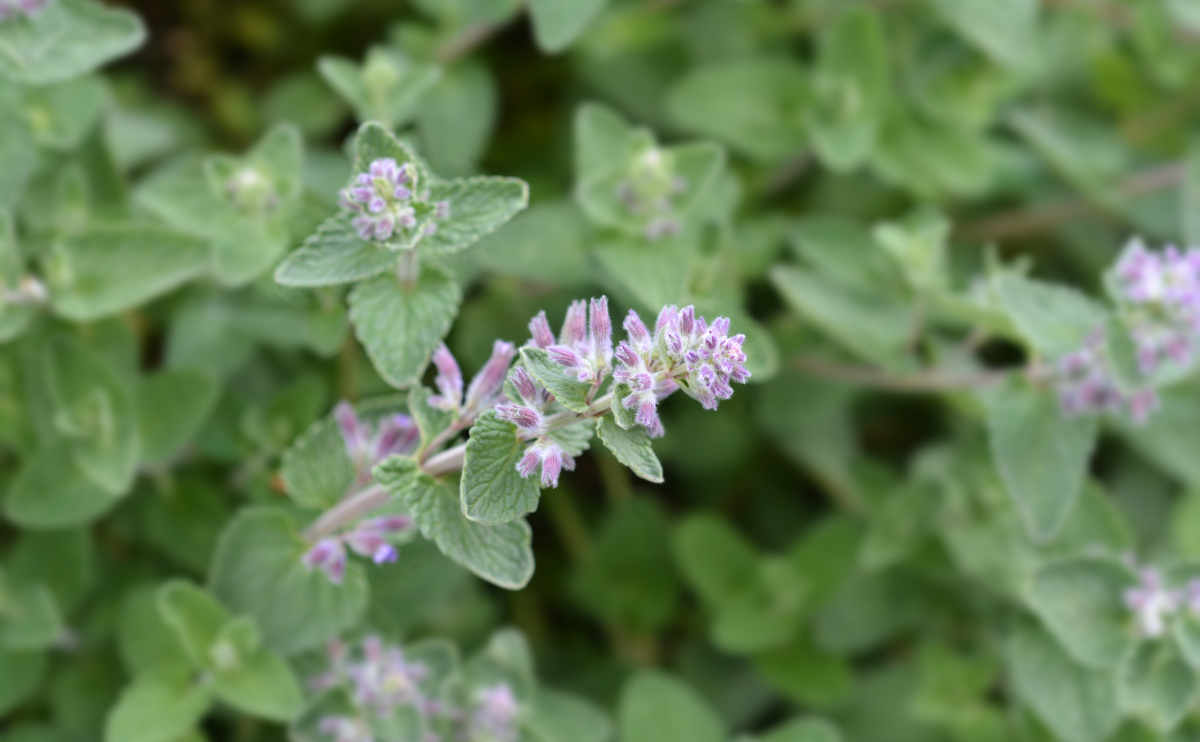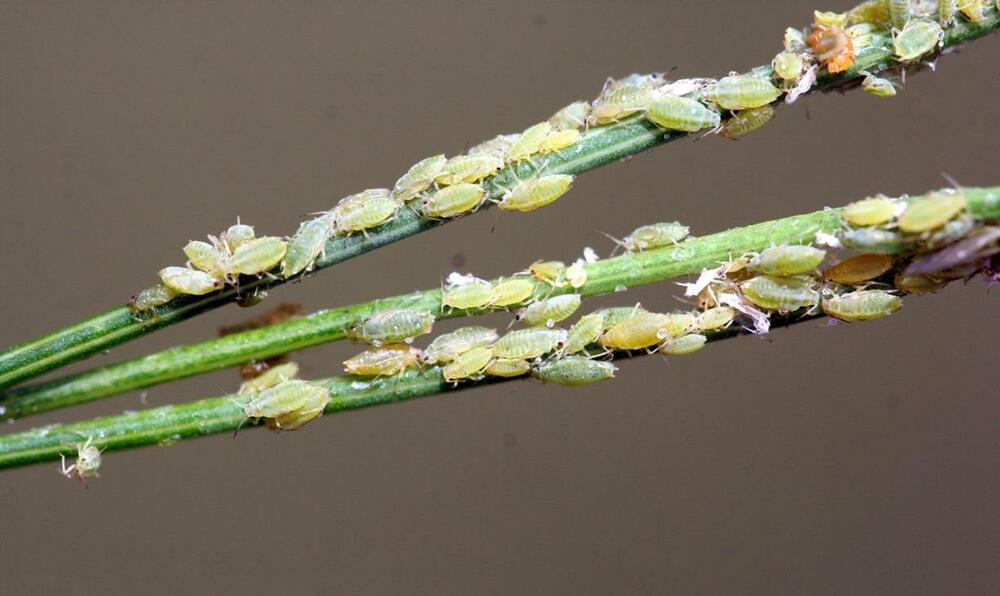Catnip (Nepeta cataria) is a herbaceous perennial that thrives in much of North America and is very easy to grow. It has a clump-forming growth habit with square stems and triangular to oval, gray-green leaves with toothed edges that stretch around 3 inches long. Flower spikes appear in the late spring to early fall, bearing clusters of small blooms that are white with light purple markings.
The catnip plant is a fast and aggressive grower and can quickly spread throughout the landscape if not kept in check. It is considered invasive in a couple of spots in the United States, such as West Virginia and Maryland. It will reach its mature size in a single season and should be planted in the spring. Note that, while many cats enjoy catnip, the oils of the plant are technically toxic to them

| Common Name | Catnip, catmint |
| Botanical Name | Nepeta cataria |
| Family | Lamiaceae |
| Plant Type | Perennial, herb |
| Size | 2–3 ft. tall, 2–3 ft. wide |
| Sun Exposure | Full sun |
| Soil Type | Loamy, sandy, well-drained |
| Soil pH | Acidic, neutral, alkaline |
| Bloom Time | Spring, summer, fall |
| Hardiness Zones | 3–7 (USDA) |
| Native Area | Europe, Asia |
| Toxicity | Toxic to cats |

When to Plant?
This will be determined by your planting zone. There is a final frost date for each area. As a result, you can plan your gardening activities around this date. Check our Frost Dates Across North America: First & Last Frost Dates Chart. However, the date will not be the same for every plant.
How to Plant
Catnip grows best in full sun or partial shade. It is a drought-tolerant plant, so it is the right choice for sunny, dry areas where many other plants will struggle. Catnip grows well outdoors at temperatures between 60°F and 70°F. You can plant catnip in spring or fall. Seeds germinate in 1 – 3 weeks. Before planting, you need to stratify the seeds: put the seeds in the freezer overnight, then in water for 24 hours. It will damage the seed coat and facilitate germination.
The seeds will germinate in about 10 – 20 days. After that, you can plant the sprouts indoors or outdoors.
Catnip produces strong roots, so plant it in a small pot. Once the seeds have germinated, you will need to transplant the catnip into individual pots. They should be deep enough, at least 1 – 1.5 gallons.

Catnip is a common herb that thrives in much of North America and is very easy to grow. Catnip grows to a height of 3 to 4 feet and has light green foliage. Catnip is a member of the mint family. It is used to make catnip tea, in cooking, and as a herbal remedy. Catnip oil is also used as natural insect repellent.
How to Cultivate
Spacing – 2 – 4″. Sun – Full sun or partial shade. If you can’t provide enough sun, you can use a fluorescent lamp above plants.
Soil – Like many herbs, this perennial thrives in well-drained soil. If the soil is too wet, it encourages catnip roots to rot.
Water – Do it regularly, but don’t overwater it. Water only when the soil has dried out a few inches below the surface.
Fertilizer. You do not need to feed catnip.
How to Harvest
Wait until your plant is at least 6-inches tall before harvesting.
Late morning is the best time to harvest, but before the day heats up.
Cut off the whole plant at the base, and hang it upside down in a dry, dark, well-ventilated place, such as the attic.
Hydroponics
Germination: To start the germination process, sow catnip seeds in your chosen hydroponic system. Catnip seeds typically germinate within 7-10 days.
pH range: The ideal pH range for catnip hydroponic growth is between 6.0 and 7.0. Monitor the pH levels regularly and adjust them accordingly using pH up or down solutions.
EC: The ideal electrical conductivity (EC) range for catnip hydroponics is between 1.0 and 2.0 mS/cm. Keep in mind that EC measures the level of nutrients in the solution, so you may need to adjust nutrient levels to maintain the appropriate EC range.
PPM: The ideal PPM (parts per million) range for catnip hydroponics is between 500 and 1000 ppm. Again, this range will depend on the specific nutrients you use, so monitor the PPM levels regularly and adjust as needed.
Humidity: Catnip prefers a relatively high humidity level, around 60-70%. Maintain proper humidity levels by using a humidifier or a humidity dome.
Light hours: Catnip requires at least 12-16 hours of light per day for proper growth. Use LED grow lights or natural sunlight to provide your plants with enough light.
Temperature air: Catnip plants grow best in temperatures between 70-80°F (21-27°C). Make sure to maintain a stable temperature range in your hydroponic system.
Temperature water: The ideal water temperature for catnip hydroponics is around 70°F (21°C). Too cold or too hot water can affect plant growth, so keep an eye on water temperature regularly.
That’s it! With the right conditions and attention, you should be able to successfully grow catnip hydroponically.



